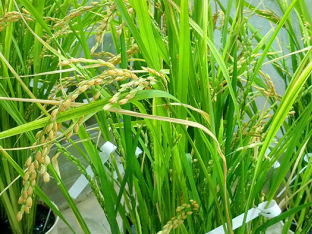Sugar Exposes Bacteria
How biologists and chemists from Israel and Germany make potentially dangerous bacteria visible
Advertisement
How can virulent bacteria be detected? The answer is: with sugar, or more precisely, with modified sugar. This is used in a new method developed by a German-Israeli team: chemist Professor Daniel B. Werz of TU Braunschweig and Professor Micha Fridman of Tel Aviv University, whose group specializes in chemical biology. “None of us could have done it alone – neither here nor in Israel. The fact that it all worked out so well is due to our collaboration. It was a completely complementary expertise,” says Professor Werz.
There are different types of bacteria, some living in the human body, some on our skin. Many are harmless, others are potentially dangerous. “As long as the body is not weakened, they do not show opportunistic behavior. But as soon as the situation changes, the bacteria can become pathogenic, meaning they can spread and infect the system,” says Professor Micha Fridman of Tel Aviv University. Of course, there are also bacteria that are always pathogenic. How strong the pathogenic effect on an organism is is described by the term virulence. Certain virulence factors, for example proteins, sugars or toxic molecules produced by a bacterium, are responsible for virulence.
The question now is how to distinguish the potentially disease-causing bacteria from the harmless ones. “Bacteria don’t reveal what they are. So we look for markers and signals,” says Professor Fridman. To solve this problem, his research group and Professor Werz’s group from Braunschweig have joined forces. The scientists’ idea: The bacterium takes up a specific sugar and can thus be unmasked. And that is exactly what they were able to demonstrate. They have published the result in a paper in the journal “Chemistry – A European Journal” (Wiley-VCH).
Chemical production of sugar in Braunschweig, Germany
The two teams divided the research work: In Braunschweig, Professor Werz and his colleagues tinkered with the production of a modified sugar. In Israel, Professor Fridman researched the biological relationships between sugar and bacteria.
The work in Braunschweig had begun with the project of Dr. Hideki Tamai, a Japanese postdoctoral researcher sponsored by the Humboldt Foundation. Dr. Amol Vibhute, an Indian postdoctoral fellow, continued the sugar research. The goal was the organic synthesis of a specially modified sugar called a pseudamic acid derivative. “That took us a couple of years,” says Professor Werz. But why was production so crucial? “In principle, you could isolate the sugar from the bacteria. But that would be very costly and the quantities would be too small,” says Professor Werz. In addition, he said, the sugar should be chemically transformed so that it reacts readily with a fluorescent dye.
Biological experiments with sugar and bacteria in Israel
The Fridman group has used the sugar produced synthetically in Braunschweig for experiments on bacteria. Bacteria form a protective shell. To do this, they absorb sugar or produce it themselves. The sugar is then presented by the bacterium on its surface. “It is known that certain sugars are specific to a certain group of bacteria that can become problematic for the host organism. So these bacteria can be identified by the sugar molecules they take up and incorporate. To prove this, Professor Fridman tested two species of bacteria – Campylobacter jejuni and Bacillus thuringiensis – that present the appropriate sugar on their surface “Two other species of bacteria that do not express the sugar were used as controls. After the addition of a fluorescent dye, the sugar reacts and binds the dye. In this way, the bacteria can be detected,” Professor Fridman said.
Important for the development of new antibiotics
This method could also be of great benefit for antibiotic development. For a long time, killing dangerous bacteria was considered the solution to problems. However, it is now understood that it is sometimes enough to prevent bacteria from becoming pathogenic by disabling their virulence factors. The method developed by the two groups allows the detection of this virulence associated sugar. Thus, it could also provide a way to test novel drugs that prevent the production of this sugar in bacteria and thus the pathogenicity of these microorganisms.





















































